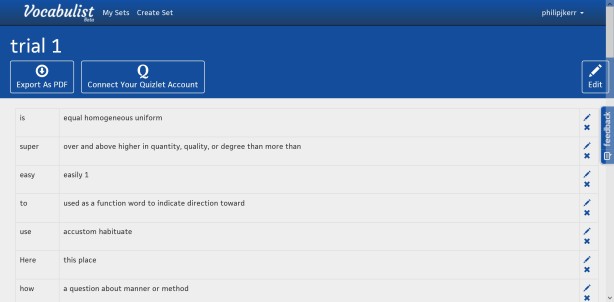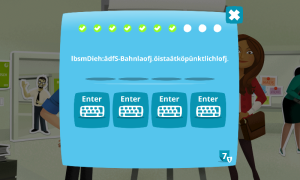If you’re going to teach vocabulary, you need to organise it in some way. Almost invariably, this organisation is topical, with words grouped into what are called semantic sets. In coursebooks, the example below (from Rogers, M., Taylore-Knowles, J. & S. Taylor-Knowles. 2010. Open Mind Level 1. London: Macmillan, p.68) is fairly typical.

Coursebooks are almost always organised in a topical way. The example above comes in a unit (of 10 pages), entitled ‘You have talent!’, which contains two main vocabulary sections. It’s unsurprising to find a section called ‘personality adjectives’ in such a unit. What’s more, such an approach lends itself to the requisite, but largely, spurious ‘can-do’ statement in the self-evaluation section: I can talk about people’s positive qualities. We must have clearly identifiable learning outcomes, after all.
There is, undeniably, a certain intuitive logic in this approach. An alternative might entail a radical overhaul of coursebook architecture – this might not be such a bad thing, but might not go down too well in the markets. How else, after all, could the vocabulary strand of the syllabus be organised?
Well, there are a number of ways in which a vocabulary syllabus could be organised. Including the standard approach described above, here are four possibilities:
1 semantic sets (e.g. bee, butterfly, fly, mosquito, etc.)
2 thematic sets (e.g. ‘pets’: cat, hate, flea, feed, scratch, etc.)
3 unrelated sets
4 sets determined by a group of words’ occurrence in a particular text
Before reading further, you might like to guess what research has to say about the relative effectiveness of these four approaches.
The answer depends, to some extent, on the level of the learner. For advanced learners, it appears to make no, or little, difference (Al-Jabri, 2005, cited by Ellis & Shintani, 2014: 106). But, for the vast majority of English language learners (i.e. those at or below B2 level), the research is clear: the most effective way of organising vocabulary items to be learnt is by grouping them into thematic sets (2) or by mixing words together in a semantically unrelated way (3) – not by teaching sets like ‘personality adjectives’. It is surprising how surprising this finding is to so many teachers and materials writers. It goes back at least to 1988 and West’s article on ‘Catenizing’ in ELTJ, which argued that semantic grouping made little sense from a psycho-linguistic perspective. Since then, a large amount of research has taken place. This is succinctly summarised by Paul Nation (2013: 128) in the following terms: Avoid interference from related words. Words which are similar in form (Laufer, 1989) or meaning (Higa, 1963; Nation, 2000; Tinkham, 1993; Tinkham, 1997; Waring, 1997) are more difficult to learn together than they are to learn separately. For anyone who is interested, the most up-to-date review of this research that I can find is in chapter 11 of Barcroft (2105).
The message is clear. So clear that you have to wonder how it is not getting through to materials designers. Perhaps, coursebooks are different. They regularly eschew research findings for commercial reasons. But vocabulary apps? There is rarely, if ever, any pressure on the content-creation side of vocabulary apps (except those that are tied to coursebooks) to follow the popular misconceptions that characterise so many coursebooks. It wouldn’t be too hard to organise vocabulary into thematic sets (like, for example, the approach in the A2 level of Memrise German that I’m currently using). Is it simply because the developers of so many vocabulary apps just don’t know much about language learning?
References
Barcroft, J. 2015. Lexical Input Processing and Vocabulary Learning. Amsterdam: John Benjamins
Nation, I. S. P. 2013. Learning Vocabulary in Another Language 2nd edition. Cambridge: Cambridge University Press
Ellis, R. & N. Shintani, N. 2014. Exploring Language Pedagogy through Second Language Acquisition Research. Abingdon, Oxon: Routledge
West, M. 1988. ‘Catenizing’ English Language Teaching Journal 6: 147 – 151








